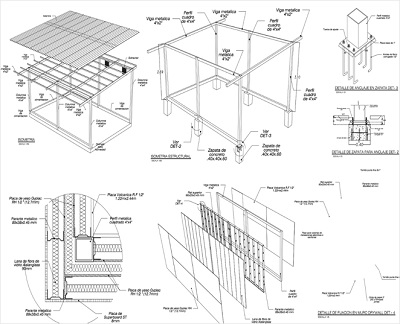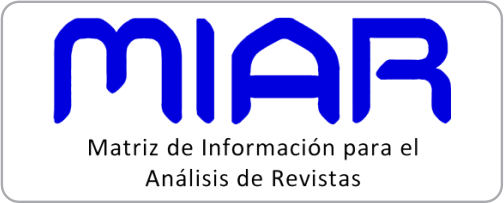Wood dryer prototype for secondary processing with greenhouse technology, solar air collectors and electronic control systems
DOI:
https://doi.org/10.51252/rcsi.v3i1.471Keywords:
furniture, humidity, industry, qualityAbstract
Wood is widely used as a renewable material for the furniture industry, but for this it must go through a drying process that guarantees the final quality of the product. Our goal was to develop a prototype wood dryer for secondary processing with greenhouse technology, solar air collectors, and electronic control systems. For this, we carried out an applied, non-experimental, descriptive investigation, of a technological nature for knowledge transfer in a carpentry company where we built the prototype with a system of measurement, monitoring and control of temperature and humidity under an IoT system with an Arduino. Mega 2560 and a Raspberry Pi applying deep learning algorithms. We managed to build the prototype to dry different species of wood with an average capacity of 1078 feet, with a drying time of 5.3 days, with 95% wood without deformations and 100% color uniformity. The dryer allows satisfactory results in terms of the physical characteristics of the wood with highly acceptable percentages.
References
Agencia Peruana de Noticias. (2022). Créditos hipotecarios siguen creciendo y logran mayor alza en 28 meses. ANDINA. https://andina.pe/agencia/noticia-creditos-hipotecarios-siguen-creciendo-y-logran-mayor-alza-28-meses-700191.aspx
Azeddine, F., El Khadir, L., & Ali, I. (2022). Experimental Investigation of Solar Greenhouse Drying of Hydroxide Sludge under Summer and Winter Climate. Polish Journal of Environmental Studies, 31(2), 1025–1036. https://doi.org/10.15244/pjoes/140278
Azizi, M., Mohebbi, N., & De Felice, F. (2016). Evaluation of Sustainable Development of Wooden Furniture Industry Using Multi criteria Decision Making Method. Agriculture and Agricultural Science Procedia, 8, 387–394. https://doi.org/10.1016/j.aaspro.2016.02.034
Camacho-Cornejo, L. D., Salas-Garita, C., Vargas-Fonseca, L., & Valverde-Otárola, J. C. (2017). Medición del conocimiento adquirido en tecnología de la madera por industriales forestales en Costa Rica. Revista Tecnología En Marcha, 30(3), 35. https://doi.org/10.18845/tm.v30i3.3271
Chi, X., Tang, S., Du, X., Song, X., Qi, Z., Yan, X., Han, G., Shi, S. Q., & Cheng, W. (2022). Effects of air-assisted solar drying on poplar lumber drying processes in sub frigid zone regions. Drying Technology, 40(16), 3580–3590. https://doi.org/10.1080/07373937.2022.2068571
Dourojeanni, M. J., Malleux, J., Sabogal, C., Lombardi, I., Tarazona, R., Rincón, C., Scheuch, H., & Barriga, C. A. (2021). Fundamentos de una nueva política forestal para el Perú. Revista Forestal Del Perú, 36(2), 118–179. https://doi.org/10.21704/rfp.v36i2.1796
Garay, J. M. B., Rivera, F. G. S., Castro, P., Marcelo, E., & Alvarez, J. C. (2021). Proposal to improve productivity in companies of a wooden furniture cluster in Peru. 2021 Congreso Internacional de Innovación y Tendencias En Ingeniería (CONIITI), 1–5. https://doi.org/10.1109/CONIITI53815.2021.9619754
García-Gómez, C. D., Lizarzaburu Bolaños, E., Berggrum, L., & Cardona, E. (2022). Evaluación de una entidad financiera usando camel: el caso de BBVA Perú. Revista Universidad y Empresa, 24(42), 1–39. https://doi.org/10.12804/revistas.urosario.edu.co/empresa/a.9431
González Cruz, I., Velázquez Abad, L., & Álvarez Lazo, D. (2020). Movimiento del agua en la madera durante el secado. Modelo discreto. Revista Cubana de Ciencias Forestales, 8, 468–477. https://cfores.upr.edu.cu/index.php/cfores/article/view/658
INEI. (2011). PERÚ: Migración Interna reciente y el Sistema de Ciudades, 2002 - 2007. Dirección Técnica de Demografía e Indicadores Sociales del Instituto Nacional de Estadística e Informática. PRINLEY S.R.L.
Malik, A., & Kumar, M. (2022). Computer software applications in solar drying. Materials Today: Proceedings, 64, 101–107. https://doi.org/10.1016/j.matpr.2022.04.008
Quintanar Olguín, J., Fuentes López, M. E., & Flores Velázquez, R. (2018). Protocolo De Mejora Continua Para Incrementar La Calidad En El Estufado De Madera. Revista Mexicana de Ciencias Forestales, 3(13), 87–94. https://doi.org/10.29298/rmcf.v3i13.491
Ratnasingam, J., & Ioras, F. (2003). The sustainability of the Asian wooden furniture industry. Holz Als Roh- Und Werkstoff, 61(3), 233–237. https://doi.org/10.1007/s00107-003-0382-9
Rosales-Solórzano, E. R. (2015). Variabilidad del contenido de humedad-equilibrio de la madera de diez especies comerciales para tres regiones del Perú. Revista Forestal Mesoamericana Kurú, 13(30), 13. https://doi.org/10.18845/rfmk.v13i30.2456
Salas-Garita, C., Moya-Roque, R., & Córdoba-Foglia, R. (2012). Diseño y construcción de un secador solar para madera. Revista Forestal Mesoamericana Kurú, 5(14), 30-55. https://revistas.tec.ac.cr/index.php/kuru/article/view/424
Vargas-Fonseca, L., Valverde-Otárola, J. C., Camacho-Cornejo, D., Salas-Garita, C., & Berrocal-Jiménez, A. (2021). Análisis perceptual del proceso de transferencia de conocimiento en maderas a instituciones en Costa Rica. Colombia Forestal, 24(1), 17–30. https://doi.org/10.14483/2256201X.15347
Xue, J., Xu, W., Zhou, J., Mao, W., & Wu, S. (2022). Effects of High-Temperature Heat Treatment Modification by Impregnation on Physical and Mechanical Properties of Poplar. Materials, 15(20), 7334. https://doi.org/10.3390/ma15207334

Published
How to Cite
Issue
Section
License
Copyright (c) 2023 Lenin Cabanillas-Pardo, Jorge Abel Cabanillas-Pardo, Antonio Mendoza-Pinedo, Milquiaset Jimenez-Montalban, Carlos Armando Ríos-López, Leydi Pintado-Pompa

This work is licensed under a Creative Commons Attribution 4.0 International License.
The authors retain their rights:
a. The authors retain their trademark and patent rights, as well as any process or procedure described in the article.
b. The authors retain the right to share, copy, distribute, execute and publicly communicate the article published in the Revista Científica de Sistemas e Informática (RCSI) (for example, place it in an institutional repository or publish it in a book), with an acknowledgment of its initial publication in the RCSI.
c. Authors retain the right to make a subsequent publication of their work, to use the article or any part of it (for example: a compilation of their works, notes for conferences, thesis, or for a book), provided that they indicate the source of publication (authors of the work, journal, volume, number and date).














